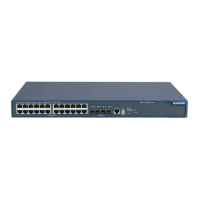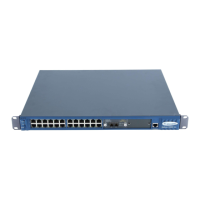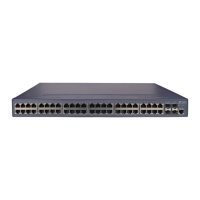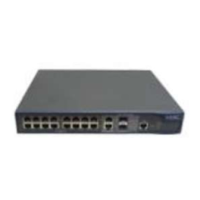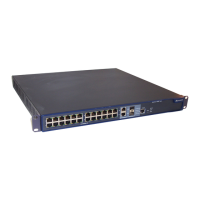Operation Manual – Multicast Protocol
Quidway S3900 Series Ethernet Switches-Release 1510 Chapter 7 PIM Configuration
Huawei Technologies Proprietary
7-8
C-BSRs can elect a new BSR through auto-election. Thus, the service is prevented
from being interrupted.
In the same way, multiple C-RPs can be configured in a PIM-SM domain, the RP
corresponding to each multicast group is worked out through the BSR mechanism.
IV. RPT building
Assume the receiver hosts are User B, User D, and User E. When a receiver host joins
in a multicast group G, it will inform the leaf router directly connected to the host through
IGMP packets. Thus the leaf router masters the receiver information of the multicast
group G, and then the leaf router will send Join messages to the upper-layer nodes in
the direction of RP, as shown in
Figure 7-5:
RP
Server
Multicast
User A
User B
User C
User D
User E
Join
Join
Join
Source
Receiver
Receiver
Receiver
packets
Join
RPT
Figure 7-5 Diagram for RPT building in PIM-SM
Each router on the path from the leaf router to RP will generate (*, G) entries in the
forwarding table. The routers on the path forms a branch of RPT. A (*, G) entry
represents the information from any source to the multicast group G. RP is the root of
RPT and the receivers are leaves of RPT.
When the packet from the multicast source S to the multicast group G passes by RP,
the packet will reach the leaf router and receiver host along the established path in
RPT.
When the receiver is not interested in the multicast information any more, the multicast
router nearest to the receiver will send Prune messages to RP hop by hop in the
direction reverse to RPT. When the first upstream router receives the Prune message, it
will delete the links with the downstream routers from the interface list and check
whether it has the receivers interested in the multicast information. If not, the upstream
router will continue to forward the Prune message to upstream routers.
V. Multicast source registration
In order to inform RP about the existence of multicast source S, when multicast source
S sends a multicast packet to the multicast group G, the router directly connected to S

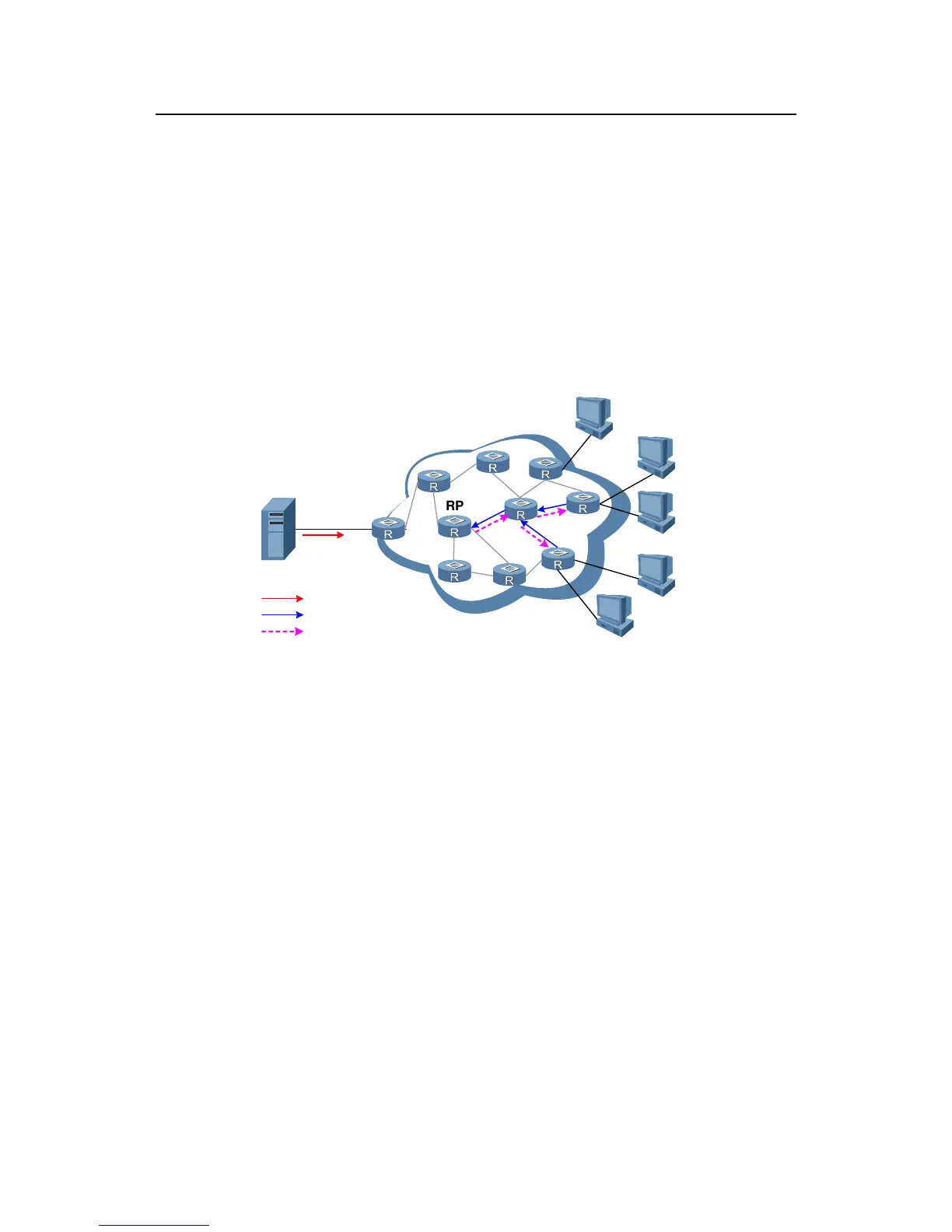